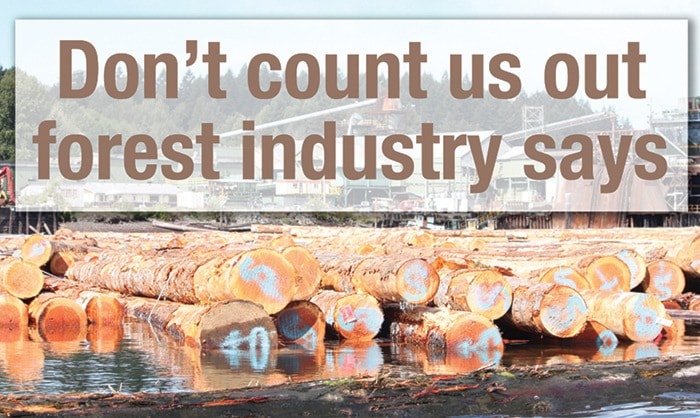Domenico Iannidinardo has a message for those who think forestry in B.C. is a sunset industry, and that logging can’t co-exist with wildlife, clean water and recreational values.
Think again.
The Chief Forester and Vice President of Sustainability with TimberWest pointed out in an interview with the Chronicle that forestry is still the second biggest industry in B.C., that it creates 40,000 direct jobs and 150,000 indirect jobs, and that it accounts for 12 percent of the province’s Gross Domestic Product.
And the industry is providing those economic benefits while being well aware of the need to coexist with other values, and while working in the most closely monitored forests on the planet.
“B.C. is the most heavily, independently certified forestry jurisdiction in the world,” Iannidinardo said.
Globally 10 percent of the world’s forests are certified; in B.C. that ratio jumps to 95 per cent.
“And we’re a significant chunk of the 10 per cent,” he emphasized.
Certified audits are conducted by recognized firms, employing accredited foresters. They verify information on a broad spectrum of values, including: sustainability, fish and wildlife, air quality and water quality, Iannidinardo said.
In fact, a lot of other industries and opportunities are opened up because forestry roads provide access he added.
“Tourism certainly has a lot of access on the Island because of forestry,” Iannidinardo said.
So do mushroom pickers, salal harvesters, people who collect firewood.
“The landscape is still producing a lot of economic activity and forestry is still the primary driver,” he said.
As for the notion that forest products are being pushed aside by other materials, Iannidinardo said the trend toward composite wood products is making wood a highly valued material.
It’s strong, light and affordable.
What’s more, he said, harvesting and manufacturing wood products is less carbon intensive than producing alternatives like steel.
To remain competitive, though, especially when B.C. is often up against producers who do not have to meet the same kinds of environmental standards that exist here, the B.C. forest sector has to innovate and invest at all levels.
“What is needed is assurance and affirmation that people in the industry are willing to adapt to the need for change,” Iannidinardo said.
He used the example of LiDAR technology.
Using drones, the system scans the forest topography identifying features like timber types, soil characteristics, and stream locations.
Using the imaging “People working in the field will have that information in their iPads and in their machines,” Iannidinardo said. “We can better match the right type of equipment for the forest on the ground.”
As for the war in the woods over old growth?
TimberWest has tapped into a better use for its old growth stands: selling their ‘carbon sink’ offsets to the Pacific Carbon Trust, the crown corporation, which it was recently announced will continue as a direct function of the provincial government.
“What is the optimal use for that old growth forest? We are in the carbon offset business directly,” Iannidinardo said, noting that 2,000 hectares of old growth left standing is equivalent to taking 30,000 cars of the road per year.
